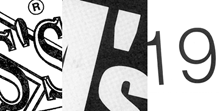Spark Magazine – National Trust
September 2011
The National Trust
Having undergone a major re-brand in 2009 the National Trust have opted to allow certain properties within their portfolio to create a ‘sense of place’ expressing the particular nature of the attraction and it's historical relevance.
Generator won a three way pitch and we were faced with a challenging yet exciting, ultimately successful, project for the Edwardian estate at Polesden Lacey, also the National Trust's South East regional headquarters.
All design and illustration work created by Generator Creative Consultants
© Generator Creative Consultants 2020
Generator at Polesden Lacey
Creating a ‘sense of place’ for the National Trust’s Polesden Lacey
Launched September 2011
Following the National Trust’s major re-brand in 2009 and it’s subsequent, and continuing, roll-out to all aspects of the organisation, certain flagship properties have been given the freedom to create a ‘sense of place’ to further identify their own personality and place in history.
Having produced a wide range of literature for the National Trust’s South East region over the past few years, Generator were invited to participate in a pitch to create a ‘sense of place’ for Polesden Lacey, the Trust’s regional headquarters in Surrey.
Having won the three way competitive pitch we were faced with an exciting, but challenging, multi-faceted project requiring us to differentiate the attractions of the period home at Polesden Lacey from it’s formal gardens to it’s slightly more rugged wider estate. Traditionally the estate at Polesden Lacey is very attractive to family’s looking for a day out in the countryside, where the kids can get muddy and play with sticks, whereas the house itself attracts a slightly more mature audience looking for a historically immersive experience. We were asked to create an identity and style for the ‘sense of place’ which evened out the split between the audience groups and that highlighted the history of the house, the people who lived and worked there and to integrate these with the wider estate.
Paul Nicholls, MD at Generator, observed “it was just a really comfortable relationship with the team at Polesden. We offered exactly what they needed – a high level of creativity, an insightful and experienced eye on the Trusts brand, local knowledge and a simple team structure allowing for direct contact to team members working on each facet of the job.”
Margaret Greville was the daughter of William McEwan, founder of the famous Scottish brewery business. Backed by his great wealth and power, she found her way into London society where she met her husband, Ronald, himself a great friend of Edward VII. In 1906 the purchased the newly restored house at Polesden Lacey, with wonderful views across The Downs, and easy access from London. Converted by Mewés and Davis the architects of the newly built Ritz Hotel, Polesden Lacey was designed as a house fit to entertain royalty. The house was filled with the most opulent furnishings and important collections of Dutch Old Masters, Italian maiolica, porcelain, silver and tapestries.
Generator created a series of graphics and illustrations based, on the visitor journey at Polesden Lacey, that were evocative of styles, fashions and décor of the era. Colour and patterns were used to identify the various areas of the property (indoors and outdoors). Illustrator Paul Oakley was commissioned to create graphic patterns that were reminiscent of the Edwardian wallcoverings but added a level of modernity.
The human history of Polesden Lacey, and of Mrs Greville, was communicated through ‘gossip’, portrayed through the use of speech bubbles and hand lettered phrases, based on handwriting styles of the period (created by well known and accomplished lettering artist Carol Kemp) and through the characters who worked and lived in the house.
Paul Cox, graduate of the Royal College of Art and known for his prestigious work in the UK and US illustrating for such titles over the past thirty years as the Daily Telegraph, Country Life, The Spectator, Punch, Esquire, and illustrator of eleven volumes of Jeeves and Wooster books, was commissioned to create a series of beautiful characters illustrating the staff and guests integral to the story of Polesden Lacey. Each character had a story to tell about Mrs. Greville and certain characters have specific tasks such as guiding you around the house or engaging with younger audiences.
The new ‘sense of place’ and it’s visual elements have been well received by a wide audience ranging from the large group of volunteers working at the property to the various visitor groups and has brought a renewed and coherent vigour and life to the entire property at Polesden Lacey.
Andy Ward, creative director at Generator observed of the work, “this project was interesting from a historical point of view and seeing the characters coming to life through such an experienced illustrator as Paul Cox was an exhilarating experience. The challenge was setting Polesden Lacey apart from the Trust’s other properties whilst still working within the parent brand. And I think what we have created has worked rather well.”












